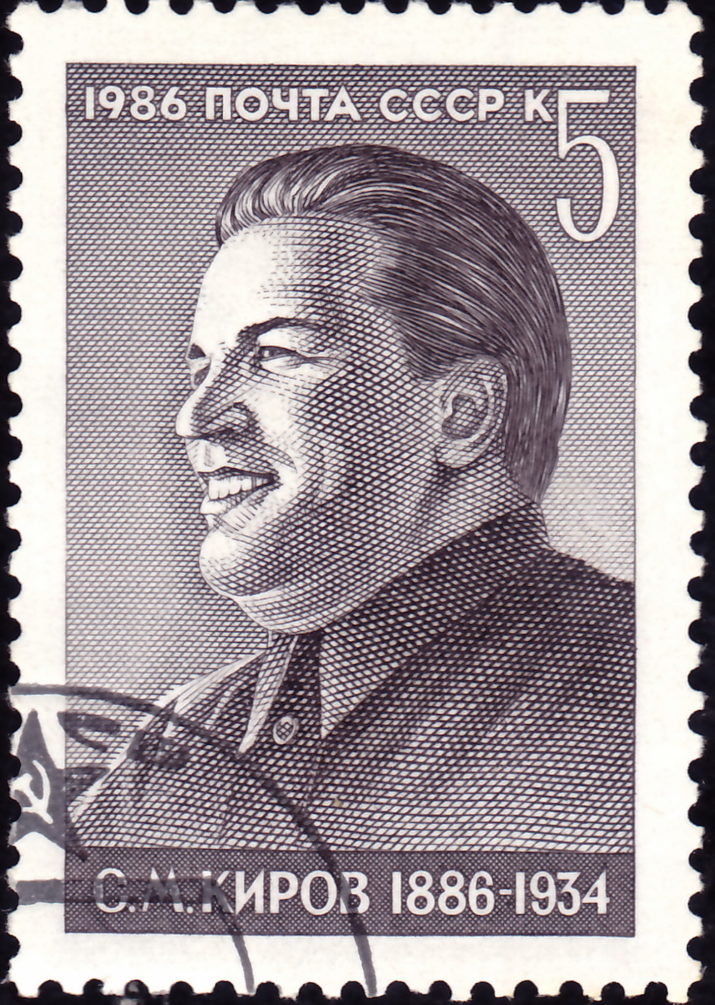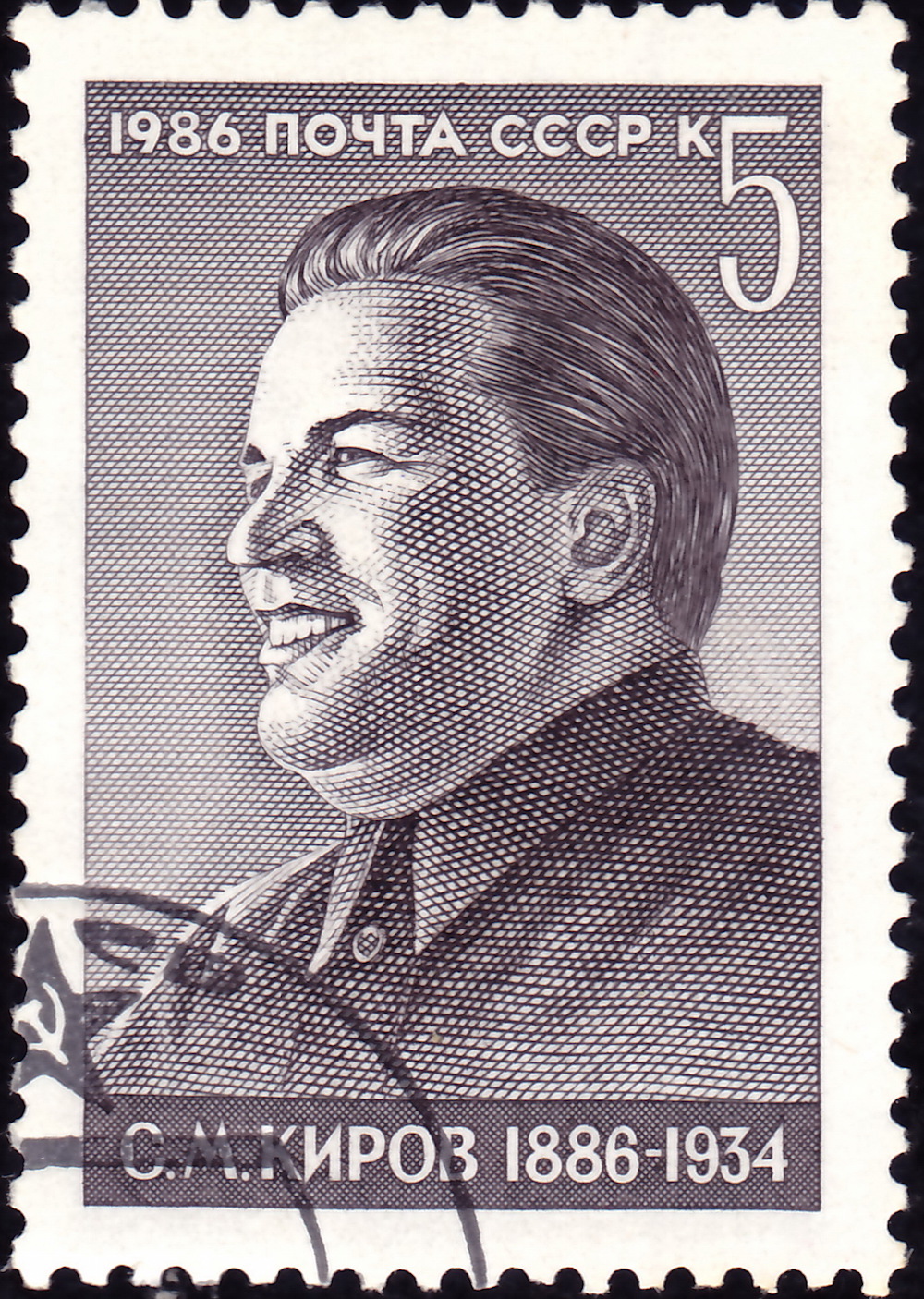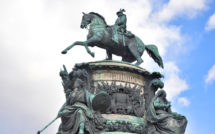

Communist Party members were ubiquitous in Soviet society, their political activities adding an ideological dimension to even the most quotidian of circumstances. According to its own Rules document (Ustav), the party, as the “highest form of [the proletariat’s] class organisation,” united in its ranks the most advanced elements of the working class in the struggle for the “victory of socialism.”[1] The Soviet constitution of 1936 declared the party to be a voluntary union of the most advanced workers, peasants, and intellectuals in “their struggle for the building of a communist society,” the “leading nucleus” of all state and social organisations.[2] Coining a major ideological tenet of the international communist movement, Vladimir Lenin described the party as the “vanguard of the working class.”[3]
In theoretical, legal, and practical terms then, the party was a central element of social, cultural, and political life in the USSR. Nevertheless, despite its evident importance, historical scholarship has struggled to offer an account of the party’s concrete place and function in the broader Soviet social and political system. Soviet historiography tended to reproduce, with little nuance, official interpretations of the activities of communists as a leading force in the development of Soviet society. In Western scholarship, prevailing interpretative frameworks left little room for an analysis of the party’s specific role.[4]
The question thus remained; what did Lenin’s vanguard actually do? One of the most influential social historians of the Stalin period described party activism as a paradox, pointing out that the many thousands of communist rank-and-filers were representatives of political authority, but their activities brought them to conflict with functionaries of the state everywhere.[5] In this article, I will argue that instead of a paradox, the dual function of the communist rank-and-file as promoter of state policy and supervisor of its implementation was a central element of Soviet state-society relations in the interwar period, inherent both in the institutional structure of the USSR and the Marxist-Leninist ideology of its communist party. Rank-and-file activism was inseparable from the policy implementation process, with the party leadership and government unleashing successive waves of political mobilization to generate support for their policy initiatives. Reliant as it was on the input of non-professional activists, this mode of governance gave the latter significant opportunities to pursue their own interests, thus also giving them a stake in the system. Ultimately, the grassroots organizations of the communist party were an extremely important but contradictory element of the Soviet political system, being a reliable constituency of grassroots support for the state while at the same time placing significant limits on state organs’ control of policy implementation. To demonstrate this point, it is best to make use of a concrete example.
Leningrad’s Red Putilovite (Krasnii Putilovets, KP), later Kirov, machine building plant was a giant factory with an illustrious revolutionary history at the cutting edge of Soviet industrial technology, pioneering the country’s tractor production processes. Famous foreign communists like Ernst Thälmann and Clara Zetkin addressed the enterprise’s workers on several occasions, as did esteemed Soviet dignitaries like Maksim Gorkii. The factory’s immense party organization was one of seventeen out of 1,814 in the city of Leningrad to consistently number more than 1,000 members throughout the interwar period.[6] Operating in one of the country’s most important enterprises, this huge group of party activists directly experienced and contributed to the tumultuous events of the era. In what follows, I shall focus on the central socio-economic transformation of the time, namely the rapid industrialisation of the USSR, examining the role played by the communist rank-and-file during two major episodes at opposite ends of the period: the late 1920s attempts at economic rationalisation and the state’s efforts to tighten labour discipline after the purges of 1937-8.[7]
The Regime of Economy was a policy initiative formulated by the April 1926 plenum of the party’s Central Committee (CC) to remedy some of the USSR’s chronic economic deficiencies constraining the country’s industrialization prospects. Unlike previous attempts to save resources by limiting wage expenditures, the CC resolution that introduced the Regime explicitly stated that the current level of workers’ earnings was not to be affected. Instead of this, measures were to be taken to improve labor productivity, including strengthening labor discipline and rationalizing the working day. At the same time, the resolution pointed at other aspects of the production process that could benefit from greater frugality, like administrative expenditures. Feeding into already tense relations between workers and management, the question of where the most economizing was to be made and, consequently, who was to bear most of the burden, quickly became a matter of dispute at the KP Party collective.
These tensions were aired before a large audience when, on April 22, 1926, the new Leningrad region party secretary Sergei Kirov visited the factory to inform the organization of the results of the CC plenum that had taken place a few days before. Addressing the meeting of about 1,000 members and sympathizers, Kirov stressed the importance of the Regime of Economy for the development of Soviet industry, arguing that the inability of the Soviet government to obtain foreign loans meant that the USSR would have to rely primarily on its internal resources for development. Every kopeck had to be seen as “one’s own sweat and blood.”. Nevertheless, Kirov’s speech was not a one-sided call for belt-tightening. The discipline of the regime of economy was not to be imposed on labor alone, but also on the administrative apparatus. “Every plan – Kirov stated – goes through twenty revisions before being implemented. The state apparatus must be brought to order.”[8]
At the end of Kirov’s speech, the floor was opened to contributions from the floor. These are remarkable for the consistency with which they attacked administrative staff as the main culprit of excessive expenses. Pavlov stated that while wage-rates bureaux were necessary, “proletarians can’t afford bureaux of 20-25 members.” Artamonov complained that the main factory store employed five inspectors who were paid ninety roubles per month to “do nothing.” Isakov hinted at corruption, alleging that storemen were paid sixty roubles per month, had families of four or five members, but could be seen out on drinking binges ten evenings a month. Only the factory’s director Grachev spoke in defence of the factory’s administrative staff and made an attempt to shift the focus of the conversation on questions of labour discipline. Amongst the last to take the floor, he stated that white-collar employees made up only 12 percent of factory staff and that any discussion on the regime of economy should start with the problem of truancy, as well as the disorderly state of shop-floors.[9]
The following year saw Party meetings play out along much the same lines, with Grachev defending the record of the factory administration, rank-and-file communists protesting bureaucratic mismanagement, while higher party functionaries attempted to strike some balance by restraining the activists while also offering some recognition of their concerns. A slight shift of the scales can however be observed in the general meeting of June 1927. By that time, the Regime of Economy had been succeeded by a new industrial campaign, the Rationalisation of Production. Unlike its predecessor, Rationalisation was meant to be achieved strictly through technical and organisational measures. Socialist rationalisation could not proceed at the expense of the country’s workers as was the case in the capitalist world. It should instead contribute to the improvement their living standards and the expansion of the range of opportunities available to them.[10] This political recalibration at the centre strengthened the hand of radical activists on the shop-floor.
Presenting his annual report on the work of the organization’s bureau, the party secretary Ivan Gaza presented figures showing that overhead costs had fallen by 2.8 percent over the preceding year. He then reported approvingly that there had been no labor disturbances during the same period, attributing this achievement to improving relations between workers and management.[11] Despite these positive developments, Gaza followed up with what seemed like an unprovoked attack on the administration, echoing many of the rank-and-file criticisms raised in previous meetings. The party organizer criticized management for its behavior towards workers’ correspondents, suggesting that they were seen as “too inquisitive.”[12] Gaza stated that the bureau did not share this view and signalled further disapproval of administrative practice saying that “we differ with the administration on the question of the fight against bureaucratism. They say there isn’t such a problem. We disagree.”[13]
The remainder of Gaza’s report revolved around the perennial problems of party building, like meeting attendance and payment of dues, which Gaza noted had improved significantly. Predictably, however, the ensuing discussion focused more on administrative failures than party achievements. The most comprehensive account of the problems facing the organization and the factory was, however, given by Ter-Asaturov, a draughtsman at the tractor department. He argued that the low skill level of the membership was the organization’s greatest handicap in its struggle to control the administration, and called for the full communization of the administrative apparatus. Ter-Asaturov went on to argue that persistent problems in political work, like the low-attendance of production conferences by party members and the sluggish rate of party saturation increase, were directly linked to the problem of bureaucratism. He contrasted the approachable manner of managers in “other factories” with that of KP staff who could never find the time to speak to workers.[14] Bureaucratism was finally condemned in the meeting’s final resolution as a symptom of the persistent predominance of old regime specialists in the factory’s white-collar staff.[15]
To sum up, the closing period of the New Economic Policy period saw the KP Party organisation become dominated by moods that were increasingly hostile to the factory’s managerial personnel. But as hostility towards the NEP grew amongst the party’s top leadership, the gap between rank-and-file moods and the political mainstream narrowed. In attacking bureaucratism, rank-and-file communists were not breaking party discipline but implementing party policy. Significantly, the activists were to a large extent anticipating, rather than responding to leadership initiatives. Communist workers saw the centre shift from a political line demanding tight labour discipline and favouring amicable relations between workers and management, to one calling party members to battle against “wicked bureaucratism” and “bureaucratic degeneration.”[16] At the same time, communist specialists like Ter-Asaturov joined the fray to propose what amounted to their promotion – the communisation of the apparatus – as the only solution to bureaucratic mismanagement. On the eve of the Great Break, the party collective of Leningrad’s Red Putilovite works provided the organisational and ideological framework for the formation of an alliance of militant workers and low-ranking technicians that would go on to become the protagonists of the First Five Year Plan.[17]
A decade after the initiation of the industrialization drive, the Soviet Union had undergone a series of radical transformations in its economy, political landscape and culture. New industrial enterprises had spawned whole cities in the steppe, literacy rates were steeply rising and a new cohort of party and state leaders from modest backgrounds were experiencing rapid promotion at the same time as some of the most revered members of the Soviet establishment were publicly tried and executed, in one of the most dramatic political realignments of the twentieth century. Factories were among the main sites of these stormy processes, with non-party workers as well as communists being drawn into the flurry of promotions, cultural activities and political denunciations. Anxious to expose perceived enemies and saboteurs lurking within Soviet industry, the Bolshevik leadership had once more encouraged the rank-and-file to speak out against corruption and incompetence, this time framing these issues as threats to state security. Communist workers duly responded to this call, making workplace tensions one of the main driving forces behind the mass repressions of 1937–8.[18]
By the time the leadership decided to apply the brakes on the hunt for enemies, party organizations in industry had lost some of their most prominent members, including those with key positions in the administration of enterprises. Having been promoted to director in 1936, the former draughtsman Ter-Asaturov was arrested and executed the following year, as the wave of repression swept the Kirov factory. Due to the rapid turnover of personnel and collapse in labour discipline brought about by the campaign, the repressions ended up causing extensive disruption in Soviet industry at the same time as the 3rd Five Year Plan (1938–1941) was attempting to place the economy on a war footing. In response to this crisis, the government enacted a series of measures to tighten labour discipline, culminating in a bundle of draconian legislation enacted in 1940 which effectively militarised labour by making it illegal to quit one’s job and introducing harsh punishments for truancy.[19] With this context in mind, we may now return to the factory floor of KP/Kirov to examine the behaviour of the party grassroots during this most authoritarian phase of Soviet labour relations.
The 2nd Conference of the Kirov Factory party organisation met in February 1940 to elect a new party committee and discuss the factory’s production plan in connexion to military needs of the then ongoing Winter War against Finland. The election took place after two days of discussion in which remarkably little was said about labour discipline despite the conference taking place a mere week after the Red Army Winter War breakthrough of February 11. Despite his candidacy, factory director Zal’tsman failed to gather the votes necessary to enter the leadership group. Although the factory’s obligations towards the war effort figured prominently in secretary Efremov’s main report, the problems he identified in production were primarily organisational in nature and therefore easily framed as administrative failures.[20] Thus Buter, the open-hearth shop delegate who took the floor immediately after the secretary could complain: “We are so close to the front, but we have stoppages because of the lack of mazut oil, despite there being some in the factory.”[21]
If the anti-managerial contributions of the speakers on the first day of the conference could be attributed to their possible detachment from the political mainstream, the same could not be said for the intervention of the district committee secretary Yakov Fedorovich Kapustin, a native KP worker who had served as the organisation’s secretary in 1938-9. Kapustin criticised Zal’tsman’s ‘method’ and admonished Efremov that a CC organiser should closely supervise the director of such an important enterprise.[22] Using rhetoric that was indistinguishable from that of the decade-old campaign against bureaucrats, Kapustin added:
Comrades say that… the system is too cumbersome, there are many spongers of various kinds, many inspectorates, who do nothing, but get money. Is it not time then to go through the whole apparatus with a party broom and clean out people who get money illegally?[23]
With this being the political tone of the conference, it is not difficult to see why Zal’tsman would fail to get elected to the committee. It is however harder to explain why a member of the party’s district committee would actively incite anti-managerial feelings in a factory under its purview by making such a contribution at a time generally seen as the apogee of Soviet industrial authoritarianism.
It is unlikely that Kapustin would act purely based on his personal views if he knew them to be at odds with party policy. Instead, it seems more plausible to suggest, his actions were fully in line with what was expected of him and others in his capacity. For although the leadership did want to tighten labor discipline and restore managerial authority after 1937 it never seemed to think of party activism as being counterproductive to this goal. As late as February 1941, the 18th All-Union Party conference sought to expand party control over industry by creating new secretarial posts at the city and regional levels to oversee specific industrial sectors. At the same time, it instructed party organizations to establish “permanent control over the work of enterprises” and “increase the masses’ labour activism in every possible way.”[24] The CC proceeded to call for a new Union-wide competition on 16 June 1941.[25]
Even on the eve of the Second World War, the party leadership remained firm in its conception of party activism as complementary to its economic objectives. Kapustin’s behaviour becomes more comprehensible in this light. If the enterprise was lagging behind in its production plan (which it was) and if Kapustin’s task was to remedy this by, among other things, inducing the party organisation to be more active in its involvement in production matters, there was no better way to do this than by attacking management for taking advantage of its privileges while also doing a bad job. In the preceding fifteen odd years, greater party involvement had meant precisely that.
Having followed the activities of the communist rank-and-file during these two episodes of the Soviet industrialisation process, it is now possible to return to the question of the broader role of the communist party in Soviet society. Based on the brief account offered here, we may view the party as an institutional link between the state and society at large, a locus in the Soviet system where the two overlapped. KP/Kirov communists were workers whose efforts were primarily directed towards addressing the issues confronting themselves and their colleagues in their giant machine-building plant within the context of Soviet industrialisation. Their understanding of the party’s objectives was always inflected through the prism of labor-management conflicts and the permanent pressure exerted on their living standards during the industrialisation drive. The institutional architecture of the Soviet state, whereby the party supervised the administrative apparatus at every level and the privileged position assigned to the working class by the ideology of Marxism-Leninism, gave communist workers considerable power vis-à-vis their bosses on the factory floor. For the party leadership, grassroots activism provided a way to circumvent the power of recalcitrant officials, even though it entailed considerable disruption of the policy implementation process. The centralist principle of party organisation meant that similar conditions obtained in social settings other than industrial enterprises. We cannot know if Lenin’s successors truly believed that this was the right way to fight for the “victory of socialism”. As we have seen however, they were certainly unwilling to scale back the activities of the “vanguard” even as they turned to increasingly authoritarian measures to enforce labour discipline in the run up to WWII. The Bolsheviks saw no contradiction between activism and state control.
Yannis Kokosalakis was recently awarded a PhD in History at the University of Edinburgh. His thesis, titled The Communist Party in Soviet Society: Communist Rank-and-File Activism in Leningrad, 1926-1941, examined the role played by the Communist Party’s grassroots members in the formation of the Soviet system. He is currently based in Helsinki, where he is preparing a number of articles based on his doctoral work.//He will be taking up a Marie Sk/łodowska Curie Fellowship at University College Dublin, Ireland in September 2018.
Photo: USSR – CIRCA 1986: A stamp printed by USSR, shows Kirov-Russian revolutionary, Soviet statesman and political figure, circa 1986
References:
[1] It was thus stated in the preamble to the 1934 Rules of the All Union Communist Party (bolsheviks). Kommunisticheskaia Partiia Sovetskogo Soiuza v rezoliutsiakh i resheniakh s’ezdov, konferentsii i Plenumov TsK, 1898-1988, vols. 1-16 (Moscow, 1983–1990).
[2] Iu. S. Kukushkin and O. I. Chistiakov, Ocherk Istorii Sovetskoi Konstitutsii (Moscow, 1987), p. 310.
[3] V. I. Lenin, “Tezisi ko II-mu Kongressu Kommunisticheskogo Internatsionala”, in V. I. Lenin, Polnoe Sobranie Sochinenii, 5th edition, vol. 41 (Moscow: Izdatel’stvo Politicheskoi Literaturi, 1974): 160–212, p. 166.
[4] During the formative years of the field, historical research was dominated by the totalitarian paradigm, a theoretical model postulating a political system of absolute state control over a society of atomised individuals. Conceiving of political subjectivity as the prerogative of a narrow circle of leaders, this view subsumed the party under the state apparatus, drawing little distinction between the two. A subsequent generation of revisionist historians sought to refute the main tenets of the totalitarian framework, by demonstrating that Soviet society retained a large degree of autonomy from the state, both because of the resilience its traditional structures and due to the weakness of the state’s administrative apparatus. Privileging the social over the political in terms of analytical primacy, this literature also paid little heed to the party grassroots as a group of people who were active supporters of the state while at the same time remaining embedded in society as workers, clerks and soldiers. For an account of the field’s development see David C. Engerman, Know Your Enemy: The Rise and Fall of America’s Soviet Experts (New York, 2009).
[5] Sheila Fitzpatrick, Everyday Stalinism: Ordinary Life in Extraordinary Times: Soviet Russia in the 1930s (New York, 2000), p. 36.
[6] Leningradskaia Organizatsia KPSS v Tsifrakh, 1917-1973 (Leningrad, 1974), p. 135.
[7] The account that follows is based on the archives of the KP/Kirov Primary Party Organisation, held at the Tsentralnyi Gosudarstvennii Arkhiv Istoriko-Politicheskiikh Dokumentov Sankt-Peterburga [Central State Archive of Historical-Political Documents of Saint-Petersburg], hereinafter TsGAIPD.
[8] TsGAIPD, f. 1012, op. 1, d. 266, l. 42.
[9] Ibid., l. 43. Stenographic records do not usually include first names and patronymics.
[10] KPSS v rezoliutsiakh, vol. 4, pp. 161–167.
[11] TsGAIPD, f. 1012, op. 1, d. 418, l. 104–102.
[12] Workers’ correspondents were grassroots volunteer journalists that reported on various aspects of everyday life for the local and national press. See Jeremy Hicks, “From Conduits to Commanders: Shifting Views of Worker Correspondents, 1924–26,” Revolutionary Russia 19, no. 2 (2006): 131–49.
[13] TsGAIPD, f. 1012, op. 1, d. 418, l. 109.
[14] Ibid. ll. 122–123. Ter-Asaturov’s description of ‘other factories’’ upravliaushchie as having their ‘doors open’ to workers was entirely in line with the popular image of the good red director. See on this Diane P. Koenker, “Factory Tales: Narratives of Industrial Relations in the Transition to NEP,” Russian Review 55, no. 3 (July 1, 1996): 384–411.
[15] Ibid. ll. 131–132.
[16] KPSS v resoliutsiiakh, vol 4, p. 339.
[17] Channelling the anti-managerial sentiment of these groups, the leadership of the organisation later contributed to the sacking of Grachev and the arrest of his deputy director by the secret police. For this story, see Clayton Black, ‘Answering for Bacchanalia: Management, Authority and the Putilov Tractor Program, 1928-1930’, The Carl Beck Papers in Russian and East European Studies 1508 (2002).
[18] See on this Wendy Z. Goldman, Terror and Democracy in the Age of Stalin: The Social Dynamics of Repression (Cambridge, 2007).
[19] For an analysis of the legislation and its context see Kenneth M. Straus, Factory and Community in Stalin’s Russia: The Making of an Industrial Working Class (Pittsburgh, 1998).
[20] TsGAIPD, f. 1012, op. 2, d. 1954, l. 28.
[21] Ibid, l. 72.
[22] Ibid, 1. 128–129.
[23] Ibid, l. 132.
[24] KPSS v rezoliutsiiakh, vol. 7, p. 192.
[25] Ibid. p. 209. Although this campaign would be disrupted by the German invasion of the USSR six days later, the CC renewed it the following year, pp. 283–300.
Published on April 17, 2018.




